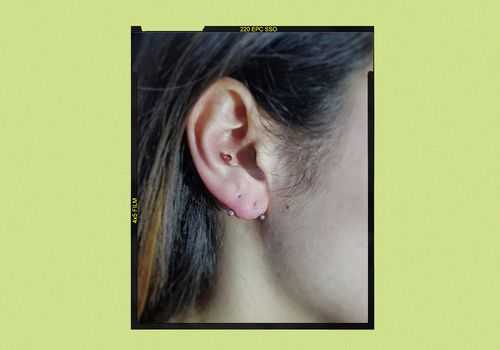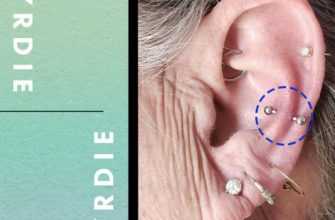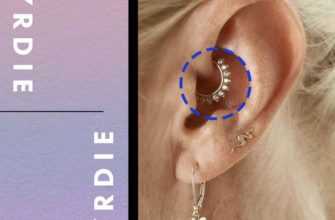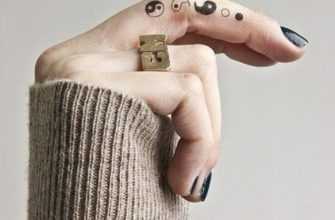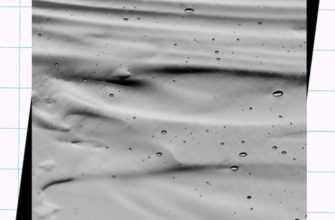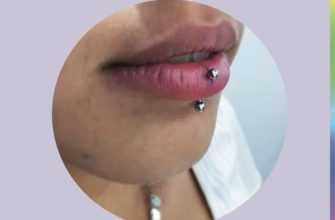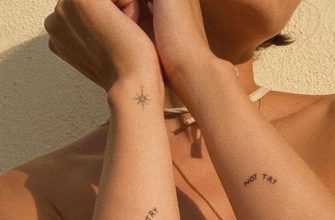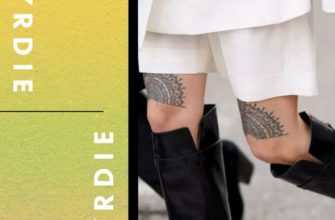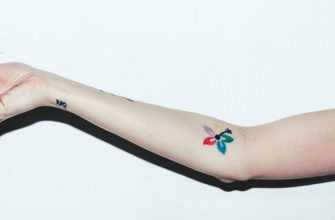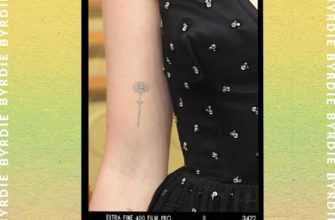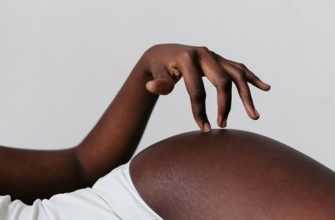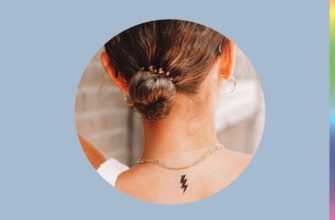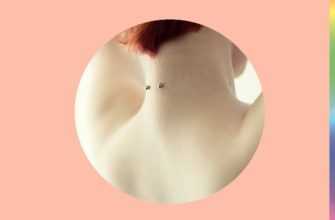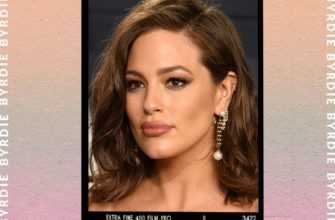What Is a Transverse Lobe Piercing? Pain and Healing Time Cost of a Transverse Lobe Piercing Aftercare Side Effects of Piercing How to Change Out a Transverse Lobe Piercing What Type of Jewelry Is Used for a Transverse Lobe Piercing? What Jewelry Materials Are Used for a Transverse Lobe Piercing?
Lobe piercings are one of the most common types of body modifications, considering that they look good on everyone, are easy to pierce, and are relatively painless. But thanks to their widespread popularity, they’ve become a bit overdone. For people who want the simplicity of a lobe piercing but want something a bit more unique, there’s transverse lobe piercing, which takes the look of a lobe piercing and rotates it—literally.
Transverse Lobe Piercing
Placement: Pierced side to side through the earlobe.
Pricing: About $30
Pain level: “I’d rate the initial piercing pain between 4 and 6,” says professional piercer Natalia Smith.
Healing time: Two months at a minimum, but up to 10 months.
Aftercare: Flush with a sterile saline solution twice per day until fully healed, and avoid activities that would add dirt or sweat to the piercing site.
What Is a Transverse Lobe Piercing?
A transverse lobe piercing is a piercing comprised of a barbell threaded through the earlobe from side to side, rather than front to back. This means that rather than having a front and back like a lobe stud would, transverse piercings have a ball on each end that can be seen on either side of the earlobe once pierced.
Transverse lobe piercings are typically done freehand due to the amount of tissue, but piercers may also utilize a clamp to keep the lobe in place during the process. Once the entry and exit points have been marked on both sides of the lobe, a hollow needle is inserted into the outside edge of the lobe and pushed through to the inner edge. The jewelry—typically a barbell—is inserted behind the needle to be fixed into the new hollow piercing site.
It’s also important to keep in mind that how your transverse lobe piercing is done and how it looks are in part determined by your anatomy. If your earlobes are attached, your piercer may opt for a curved needle to avoid piercing the side of your face. If you have detached lobes, though, your piercer will most likely opt for a straight needle. This affects the overall look as well: If your lobes are attached, your piercing will itself look curved; if you have detached lobes, it will look straight.
Pain and Healing Time
Because the transverse lobe piercing is done through the earlobe, it’s considered one of the least painful types of piercings. However, that doesn’t mean it won’t hurt. Because everyone has a different pain tolerance and different ideas of what is considered “painful,” there’s really no telling just how much a transverse lobe piercing would hurt. Though, according to Natalia Smith, head piercer at BodyArt Caribbean. it’s not too bad.
“On a scale from 1 to 10, I’d rate the initial piercing pain between 4 and 6,” says Smith.
At a minimum, a transverse lobe piercing will take roughly two months to properly heal. It can take up to 10 months total, though, so it’s important to keep track of how your piercing is healing, rather than counting down the days. The piercing hole for transverse lobe piercings also tend to be quite large compared to a typical single lobe piercing, which may also cause it to take longer to heal.
Cost of a Transverse Lobe Piercing
Transverse lobe piercings typically cost between $30 and $50 for the actual piercing itself. On top of that, though, some studios may charge you an additional fee for the jewelry, rather than combining it in one price. Be sure to check with your piercer about payment first, as jewelry can range anywhere from $15 to $50, and you could actually end up paying double what you expected. It’s also important to consult about the price at the onset, as it can range due to the studio’s rules, your piercer’s experience, and your location.
Aftercare
“It is important while the piercing heals to keep it clean and free of germs,” says Weston Waxweiler, MD, a board-certified dermatologist with the Cleaver Medical Group.
The best way to do that for a transverse lobe piercing is to use a saline solution twice a day to flush out any build-up or bacteria. To do this, you can either create a saline soak and submerge the piercing in it for a certain amount of time, or use a cotton swab to apply the solution directly to the piercing site—both work, so do whichever is more convenient for you. Once you’re done flushing the piercing site, be sure to gently pat dry with a paper towel.
While the actual care isn’t too intensive, there are a lot of activities to avoid with a healing transverse lobe piercing. For one, be careful with soaps when showering; Smith advises that you tilt your head away from the runoff to keep it away from your piercing. She also suggests washing your pillowcases regularly and only touching your piercing (if necessary!) with clean hands. Waxweiler also stresses the importance of staying away from activities that could add dirt or sweat to the wound, like running or visiting a sauna.
“It’s OK to work out and whatnot, just make sure to shower afterward and not sit around in your sweat,” says Waxweiler.
Side Effects of Piercing
- Keloid: Keloids are your body’s natural way of trying to combat the skin trauma of a piercing. These are scars that are usually bigger than the piercing site and can be fairly painful. Laser or surgery are required to remove keloids, so it’s important to keep an eye on your piercing sites during healing. “If signs of a keloid develop (thickening of the skin into almost a nodule), consider visiting your dermatologist,” says Waxweiler.
- Infection: Infections are the most serious side effect of any piercing. To avoid an infection, be sure to follow your piercer’s aftercare instructions correctly and avoid prohibited activities. If you notice prolonged swelling, redness, burning, itching, or intense pain, these could be signs of infection, so seek medical help immediately.
How to Change Out a Transverse Lobe Piercing
It’s relatively easy to change out a transverse lobe piercing. If you’d like to do it yourself, just be sure that you’re switching the jewelry out for another piece made of properly-sized implant grade materials so as not to harm the piercing. If you are unsure about changing it yourself, it’s a great idea to go back to your piercer and have them do it for you. Plus, says Drew Young of Bohemian Piercing, “They will be willing to answer any questions you may have and be able to sell you appropriately sized jewelry.”
Keep in mind, though, that you can’t change out your jewelry whenever you want to; you have to wait until the piercing is fully healed first. Other than monitoring the healing time, though, how can you know? Smith says it’s as easy as giving your jewelry a tug, as if you were going to change it out.
“If you have difficulty and experience pain when moving it, then do not change it just yet,” says Smith.
What Type of Jewelry Is Used for a Transverse Lobe Piercing?
Barbell: A barbell is made up of a metal bar with two small beads on either end—one removable and one fixed. Barbells are used in transverse lobe piercings by being pushed through from the outer to the inner edge of the lobe and secured with the non-fixed ball. The anatomy of your ear decides what kind of barbell will be used: A straight barbell is for detached earlobes, while a curved one is for attached lobes.
What Jewelry Materials Are Used for a Transverse Lobe Piercing?
- Titanium: Titanium is considered the safest metal to use for piercings, as it doesn’t contain nickel and won’t cause an allergic reaction or general irritation. Titanium is also lightweight and doesn’t tarnish, so you can be sure that whatever jewelry you choose will look good for a long time.
- Surgical steel: Although surgical steel is the most common type of metal, it’s not considered the safest. Surgical steel does contain nickel, so people with nickel allergies, or those who find that nickel generally irritates them, should stay away from this metal.
- Pure sterling silver: Pure silver, which claims it has 99.9% silver content, is probably the most common type of piercing metal. However, you have to be careful with sterling silver jewelry, as it’s fairly soft and could be vulnerable to chipping or harboring bacteria if not cared for.
- Gold: Gold is a good choice for those who want a more classic look, rather than the typical silver or unique bright colors. It’s important to note, though, that gold jewelry should always be 14 karat or higher to ensure it’s solid enough and won’t harbor bacteria.

